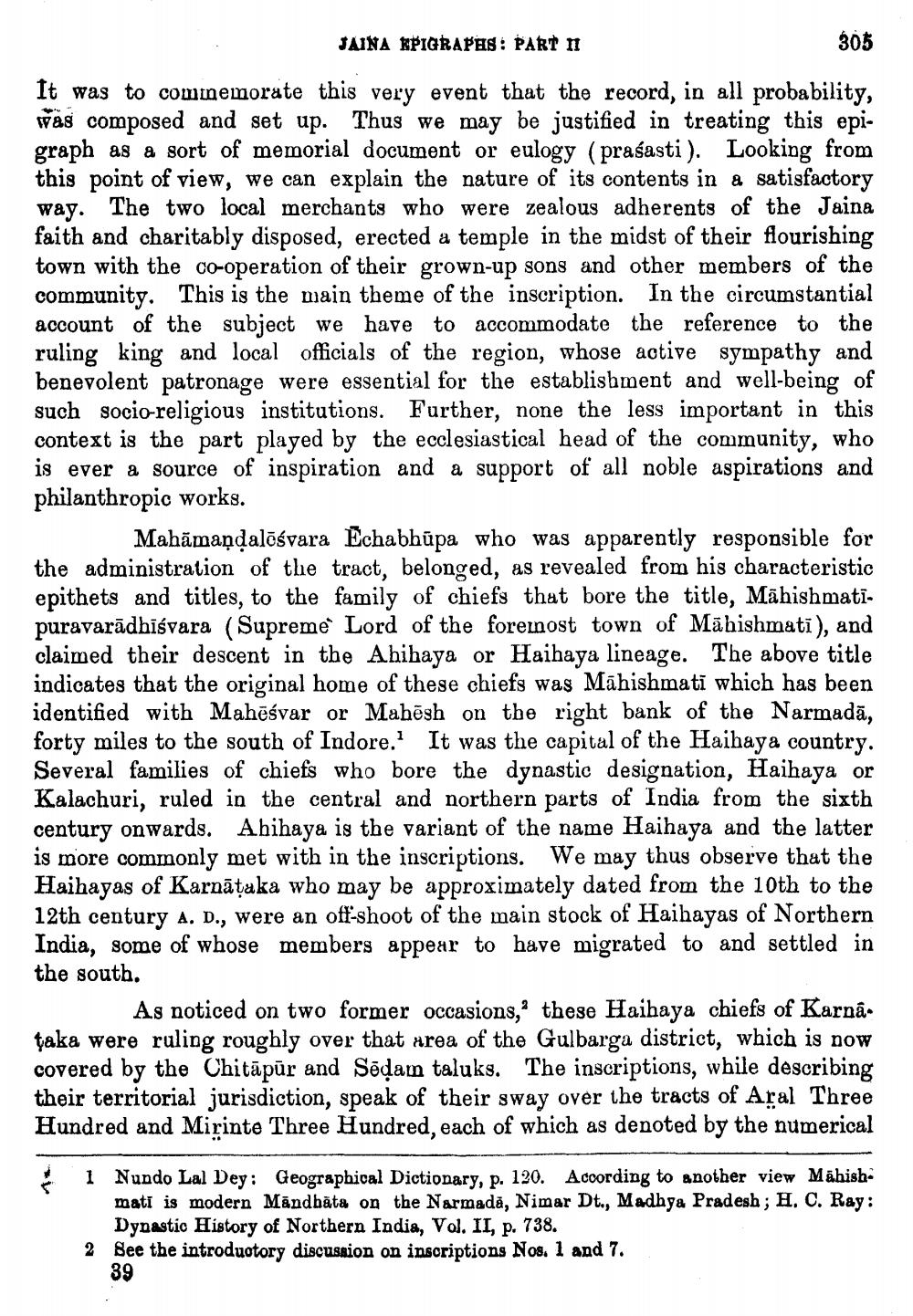________________
JAINA EPIGRAPHS: PART II
It was to commemorate this very event that the record, in all probability, was composed and set up. Thus we may be justified in treating this epigraph as a sort of memorial document or eulogy (prasasti). Looking from this point of view, we can explain the nature of its contents in a satisfactory way. The two local merchants who were zealous adherents of the Jaina faith and charitably disposed, erected a temple in the midst of their flourishing town with the co-operation of their grown-up sons and other members of the community. This is the main theme of the inscription. In the circumstantial account of the subject we have to accommodate the reference to the ruling king and local officials of the region, whose active sympathy and benevolent patronage were essential for the establishment and well-being of such socio-religious institutions. Further, none the less important in this context is the part played by the ecclesiastical head of the community, who is ever a source of inspiration and a support of all noble aspirations and philanthropic works.
305
Mahamaṇḍalēsvara Echabhupa who was apparently responsible for the administration of the tract, belonged, as revealed from his characteristic epithets and titles, to the family of chiefs that bore the title, Mahishmatipuravaradhiśvara (Supreme Lord of the foremost town of Mahishmati), and claimed their descent in the Ahihaya or Haihaya lineage. The above title indicates that the original home of these chiefs was Mahishmati which has been identified with Maheśvar or Mahesh on the right bank of the Narmada, forty miles to the south of Indore.' It was the capital of the Haihaya country. Several families of chiefs who bore the dynastic designation, Haihaya or Kalachuri, ruled in the central and northern parts of India from the sixth century onwards. Ahihaya is the variant of the name Haihaya and the latter is more commonly met with in the inscriptions. We may thus observe that the Haihayas of Karnataka who may be approximately dated from the 10th to the 12th century A. D., were an off-shoot of the main stock of Haihayas of Northern India, some of whose members appear to have migrated to and settled in the south.
As noticed on two former occasions,' these Haihaya chiefs of Karna. taka were ruling roughly over that area of the Gulbarga district, which is now covered by the Chitapur and Seḍam taluks. The inscriptions, while describing their territorial jurisdiction, speak of their sway over the tracts of Aral Three Hundred and Mirinte Three Hundred, each of which as denoted by the numerical
÷ 1 Nundo Lal Dey: Geographical Dictionary, p. 120. According to another view Mahishmati is modern Mandhata on the Narmada, Nimar Dt., Madhya Pradesh; H. C. Ray: Dynastic History of Northern India, Vol. II, p. 738.
2 See the introductory discussion on inscriptions Nos. 1 and 7. 39




